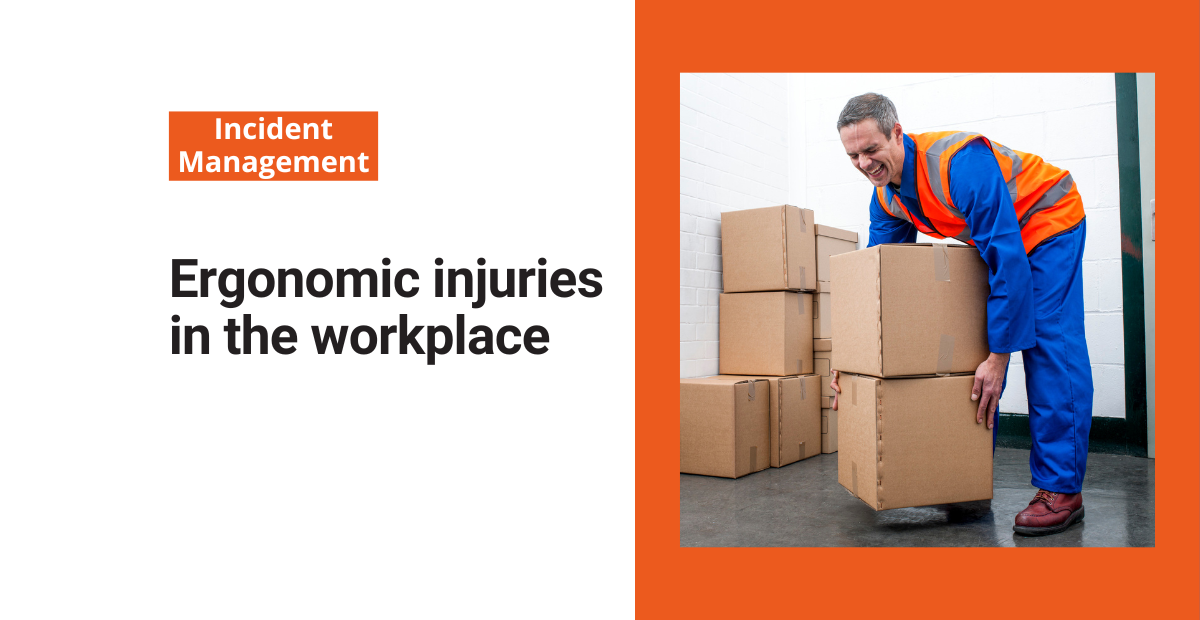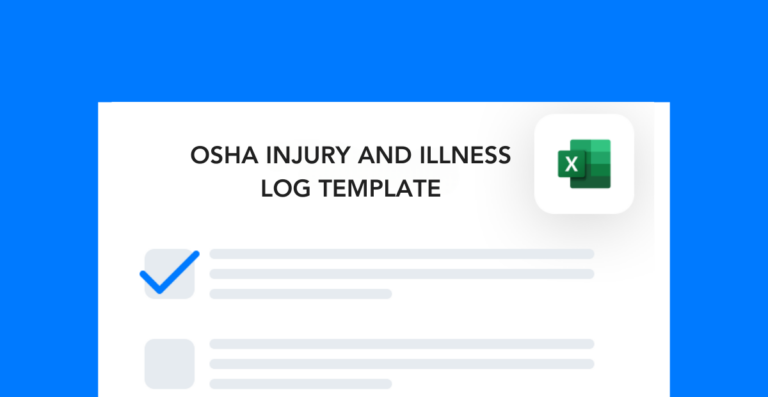As an EHS professional, there’s nothing more painful than hearing that there’s been one or more ergonomic injuries. They’re difficult to deal with because you have to maintain a high level of employee care. Meanwhile, you are also working through the care management side of safety.
Free template!
This OSHA injury Excel template includes the 300, 300A, and 301 forms you’ll need to fill out for tracking ergonomic injuries in particular.
The difficulty of managing musculoskeletal injuries
Musculoskeletal injuries pose many challenges for the employee and definitely for us as EHS professionals. An employee may have an ergonomic injury they don’t know about for minutes, hours, or even more.
I’ve seen many injuries related to ergonomics where an employee goes home for the night and doesn’t feel the injury until later in the evening. Usually, they think it’s a small “tweak” and don’t say anything until they can’t sleep at night. This results from ergonomic problems.
This poses some challenges for quick and effective treatment. After all, the goal of treatment is to correct the injury prior to the onset of long-term issues. This is the outcome of effective case management.
Getting an ergonomic study for injuries
When you look at workplace ergonomic injuries, they’re typically the result of poor ergonomic conditions or processes. The best-case scenario is to team with your insurance provider. You can obtain an ergonomic study at your facility, which includes ergonomic recommendations you may be able to implement.
The downside is that these studies are often expensive, so many companies can’t afford them. But I’d highly recommend this preventative action. It almost always provides valuable insights that your team can use to make improvements and prevent such injuries.
If you can’t get a study completed through your insurance company for any variety of reasons, you may be able to obtain an ergonomic tool online. You can obtain a generic one from OSHA, here. However, you should really dig into ergonomic factors more than just a generic OSHA worksheet when aiming to prevent injuries.
Performing a site assessment for ergonomic injuries
Performing a full site assessment is crucial in preventing injuries related to ergonomic challenges. What you won’t get from a generic template is a site-specific understanding of the hazards your workers deal with every day. This is especially true for those contributing to ergonomic injuries.
That only comes from walking the site and observing the processes and behaviors that may cause these injuries. Here are few things to consider when performing your own site assessment:
- What kind of body positioning do workers use in each process?
- How repetitive are the tasks that workers perform?
- What is the relative height of employee workstations and equipment?
- Do workstations have preventative control measures in place? (Mats, chairs, etc.)
In addition to observing current processes, you should also review past ergonomic injury data. Look at injuries, first aid incidents, and near misses to find patterns.
For example, is there a specific process or department that produces the majority of incidents related to ergonomic issues? If so, you should consider starting in that area, for the best chance of reducing injury rates.
When addressing the issues you uncover, it’s best to involve other departments and stakeholders (employees, safety committee, upper management, etc.). I would also recommend you involve your engineers if possible.
Get creative with your solutions. Perhaps if you’re trying to prevent workers from lifting heavy objects all day, you can consider hydraulic lift tables/vehicles. They can take over those tasks related to ergonomic wear and tear. Not every idea you have will work, but it’s important to stay creative and open-minded to unique solutions.
Being proactive in your approach
Because ergonomic injuries can drag on for quite a while, it’s best to eliminate the hazards that cause them as quickly as possible. Even though they’re fairly commonplace (regardless of industry), these types of injuries are not inevitable.
As always, your goal should be to remove the conditions that allow workers to develop unsafe habits and prevent issues from ergonomics. If you can rearrange workstations or redesign processes, you might find relatively cost-effective measures to reduce incident rates at your site.

Jason Hathcoat
Jason is a seasoned EHS professional with more than 17 years of experience working in health and safety. He currently works as an EHS manager for a large global HVAC company.




